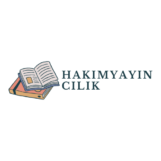Navigating through a nonfiction book can sometimes feel overwhelming, especially with so much information packed into its pages. That’s where the table of contents comes in. It’s not just a list of chapters; it’s a roadmap guiding readers through the author’s journey, making complex ideas more accessible.
What’s the purpose of the table of contents in nonfiction writing? I’ve often found that a well-structured table of contents enhances my reading experience, allowing me to quickly locate topics of interest. It sets the stage for what’s to come, giving readers a clear overview of the book’s structure and flow. Understanding its purpose can transform how we approach nonfiction writing, making it an invaluable tool for both writers and readers alike.
Key Takeaways
- Essential Navigation Tool: The table of contents (TOC) serves as a crucial navigation aid, allowing readers to easily locate specific sections within the book.
- Structured Overview: It provides a clear snapshot of the book’s structure, revealing main themes and subtopics, which enhances comprehension and engagement.
- Sets Reader Expectations: The TOC helps readers understand what information they will encounter, creating a roadmap for their reading experience.
- Increases Accessibility: By highlighting key topics at a glance, the TOC makes the content more accessible and invites readers to revisit important sections.
- Saves Time and Improves Focus: A well-organized TOC allows readers to find relevant information quickly, keeping them focused on their areas of interest and reducing confusion.
- Best Practices for Effectiveness: For an effective TOC, use clear headings, consistent formatting, and strategic placement to enhance usability and reader experience.
What’s the Purpose of the Table of Contents in Nonfiction Writing?
The table of contents (TOC) serves as a crucial component in nonfiction writing. Its primary purpose is to provide a structured overview of the book, allowing readers to quickly locate specific sections. A well-organized TOC enhances not only the reading experience but also aids in comprehension of the material.
Key Functions of the Table of Contents
- Navigation: The TOC helps readers navigate through complex topics, offering clear markers for each section.
- Overview: The TOC presents a snapshot of the book’s structure, revealing the main themes and subtopics covered.
- Expectations: The TOC sets expectations for content, helping readers identify what information they’ll encounter.
- Accessibility: The TOC increases accessibility for readers by highlighting key topics at a glance, making it easier to revisit important sections.
- Saves Time: Readers find relevant information faster without needing to flip through pages.
- Enhances Focus: A clear TOC keeps readers focused on their areas of interest, reducing the chance of getting lost in the text.
- Improves Retention: By outlining the structure, a well-crafted TOC aids memory retention, allowing readers to recall where specific information resides.
By effectively utilizing the table of contents, I can improve both my writing and readers’ experiences, creating a more approachable and user-friendly nonfiction work.
Key Functions of the Table of Contents
What’s the purpose of the table of contents in nonfiction writing? The table of contents (TOC) serves several key functions that enhance the usability of nonfiction writing. Each function aids the reader in engaging with the content more effectively.
Navigation Aid
A TOC acts as an essential navigation aid, directing readers to specific sections with ease. Readers can quickly locate topics of interest without sifting through the entire text. By listing chapter titles or main headings, the TOC streamlines access to information, allowing readers to jump directly to relevant sections. This targeted approach promotes a more efficient reading experience and maintains reader engagement.
Organizational Tool
The TOC functions as a vital organizational tool, presenting the structure of the book clearly. It outlines the main topics, subtopics, and their corresponding page numbers, enabling readers to grasp the organization of the content at a glance. This structured approach assists in understanding the flow of information, making it easier to follow thematic progressions. A well-organized TOC reflects the writer’s thought process and systematic arrangement, enhancing credibility and professionalism.
Preview of Content
A TOC provides a preview of the content, offering readers insight into what they can expect from the book. By reviewing the headings and subheadings, readers can assess whether the content aligns with their interests and needs. This preview creates a roadmap for deeper exploration, helping readers anticipate the depth and scope of discussions. An informative TOC sets the stage for a comprehensive learning experience, motivating readers to dive into the material with confidence.
Enhancing Reader Experience
A well-crafted table of contents (TOC) significantly enhances the reader’s experience in nonfiction writing. It provides clarity, structure, and encourages engagement throughout the reading journey.
Clarity and Structure
Clarity stems from an organized TOC, which outlines the logical flow of information. By breaking down complex topics into sections and subsections, the TOC simplifies navigation. Readers easily find relevant information without foraging through unrelated chapters. Structure promotes understanding by reflecting how ideas connect within the text. A clear TOC not only sets clear expectations but also aids in quickly identifying the scope of each section, thereby reducing cognitive load.
Encouraging Engagement
A well-structured TOC encourages engagement by enticing readers to explore the material. When the TOC presents intriguing titles and well-defined sections, it piques curiosity. This curiosity motivates readers to delve into areas of interest, increasing their investment in the content. As readers locate topics that resonate with them, they develop a deeper connection with the book. Additionally, by providing a visual overview, the TOC allows readers to set goals for their reading sessions, enhancing their overall involvement and accountability in the learning process.
Best Practices for Creating an Effective Table of Contents
Creating an effective table of contents (TOC) involves careful planning and attention to detail. A well-organized TOC not only enhances navigation but also improves the overall reading experience.
Formatting Considerations
Use clear, concise headings that accurately reflect the content of each section. Keep the title font distinct to separate it from the body text. Number the sections consistently, and consider using a hierarchical structure for subheadings. For example:
- Main Topic
- Subtopic A
- Subtopic B
Incorporate page numbers for easy reference, ensuring they align correctly with the content. Utilize bullet points or indents for better clarity, and ensure there’s adequate spacing between entries. Always test the TOC after completion to confirm that it aligns with the actual sections of the book.
Strategic Placement
Position the TOC prominently at the beginning of the book, immediately following the introduction. This allows readers to access the roadmap before diving into the material. If your nonfiction work is particularly lengthy, consider placing an abbreviated TOC at the start of significant sections or chapters for easy navigation. Regularly revising the TOC during the writing process ensures it reflects any changes in the content, maintaining accuracy and enhancing usability for readers.
Readers’ Journey
A well-crafted table of contents is more than just a list of chapters. It’s a crucial tool that enhances the reader’s journey through nonfiction. By providing clarity and structure it helps readers navigate complex topics with ease.
I’ve seen firsthand how an effective TOC can transform a reader’s experience. It not only saves time but also encourages deeper engagement with the content. When readers can quickly find what they’re looking for they’re more likely to stay focused and retain information.
Ultimately a thoughtfully designed TOC reflects the writer’s commitment to clarity and accessibility. It’s an investment in the reader’s experience that pays off in engagement and understanding.

